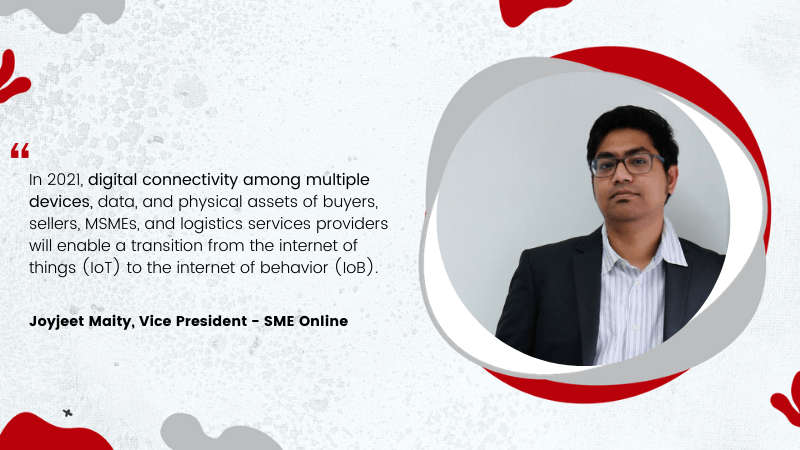B2B E-commerce in 2021: Accelerate Digital Business Transformation

After what enterprises had to endure in 2020 owing to the pandemic, they will welcome 2021 with a singular focus on answering one question: How can they unlock themselves from the challenges imposed by the disruption? These challenges include downtime in supplier clusters, inefficiencies in last-mile deliveries, and sub-optimal availability of labor. In a year when many enterprises with high exposure to offline and manual workflows had to bear the brunt of the pandemic, B2B e-commerce has held its ground. It has survived and thrived owing to a higher degree of digitalization.
Read: My vision for Moglix is to change the face of industrial commerce
Enterprises will look to keep the B2B supply chain moving against all odds in 2021. They will tap B2B e-commerce for answers to the challenges they faced in 2020. With the need to maintain social distancing and operate from protected environments with a reduced workforce, enterprises have explored a new world of possibilities in 2021.
The definition of e-commerce in India is far is fluid. In 2021, a larger number of enterprises will be willing to explore B2B e-commerce as a platform to procure and sell to other enterprise customers. In 2021, B2B e-commerce will become integral to the manufacturing supply chain and cover a vast spectrum of offerings, including packaging, dedicated infrastructure supplies, manufacturing-as-a-service, brand distribution, digital procurement, SaaS, MRO, and digital supply chain finance.
Download Case Study: How Moglix enabled agile MRO procurement for a large construction company
B2B e-commerce companies that use a marketplace model can integrate a large number of suppliers in the real economy with digital supply chain models. They stitch together analytics from apps-based commerce, content platforms, and devices to track demand with a hyperlocal strategy to optimize last-mile deliveries effectively.
In 2021, the digital connectivity across devices and physical assets of buyers, sellers, and logistics services providers will enable a transition from the internet of things (IoT) to the internet of behavior (IoB). Data will drive the mobility of goods and services that are integral to stakeholders in the real economy.
2021 will see B2B e-commerce companies using digital solutions to connect physical assets, enterprise buyers, logistics services providers, and local suppliers on a single platform. These platforms will create more opportunities for local suppliers to enable new market opportunities through domestic and global trade in 2021.
The Department for Promotion of Industry and Internal Trade (DPIIT)’s draft national e-commerce policy (NECP) focuses on export promotion through e-commerce. Once formalized, B2B e-commerce companies will create a digital supply chain ecosystem for local suppliers and large enterprises to find the next big market opportunity from a single window. It is likely to lead to 51% higher revenues for enterprises with B2B e-commerce participation than their offline counterparts.
The low-touch digital supply chain operating systems will rise in 2021 and significantly reduce enterprises’ business expansion costs. The scope of cost savings through B2B e-commerce is projected to be anywhere between 60 to 80%.
Joyjeet Maity is Vice President, Marketplace & SME Online at www.moglix.com
To learn more about manufacturing and supply chain trends in 2021, download our ebook titled Road to Self-Reliant Manufacturing: Procurement and Supply Chain Insights for 2021 here.
